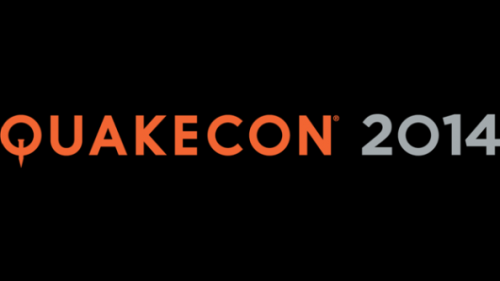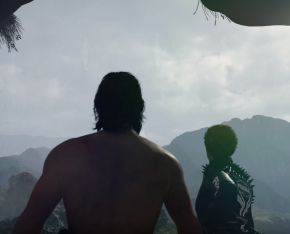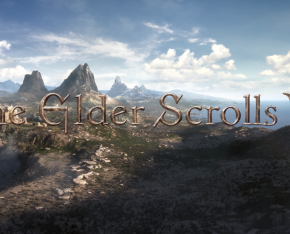By Simon Moore on July 7, 2014 at 1:51pm
With only 10 short days separating us from the event known as QUAKECON, it’s about time we all learned a little more about what makes it tick and why it’s known as the “Woodstock of Gaming.” Every day here at Player Theory, we're going to deliver you an article that reveals a little more about the event because, as you know, “an article a day keeps the Strogg away.”
Let’s go for the easy one first, If you didn’t already know, I’m sure you’re asking yourself, "What is QuakeCon?"
QuakeCon
The simple answer is that QuakeCon or Quake Convention (eh!) is a yearly gaming event to promote and play Id Software’s "Quake" and "Doom" titles in Dallas. The slightly longer answer is that QuakeCon is an event run by ZeniMax Media, the parent company behind Id Software and Bethesda, which is used to promote and celebrate the legacy of Id Software and subsequently the other studios operated by ZeniMax. The event itself is held only a short distance from Id's office.
A highlight for many at the event is the (BYOC) Bring Your Own Computer gaming event. Hundreds of gamers set up and take part in a bloodbath of "peace, love, and rockets!” That may seem like an odd combination, but there’s no love lost between the competitors in the arena. When the dust settles, there’s only a few bruised egos.
The tournaments held at QuakeCon are for another time, but for now just know that QuakeCon is the largest free LAN party in the world, created by gamers to better enjoy multiplayer games. It’s open to the public and brings together some of the greatest players in the world to participate in competitive tournaments, tournaments which you can take part in if you can get down to Dallas. So don’t be afraid to rack up some frags and set your name in QuakeCon history.
Humble Beginnings
It wasn’t always glitz and glamor for QuakeCon, it wasn’t an event patrolled by ‘Gladiators’ or ‘Iron Maidens,’ and in the beginning, it wasn’t even a truly structured convention. The event is highly dependent on volunteers to cover many aspects of the organization of the event, and this was no more accurate than in its formative years.
Started in 1996 by just a couple of gamers looking to get together and have some fun, QuakeCon quickly spiraled into a huge event attended by thousands of players from around the world. In the depths of EFnet IRC network, from the ashes of "The Great Split" and nestled in the #Quake channel, the seeds of QuakeCons birth were placed. The "Great Split" of 1996 separated the EFnet network in two with both the North American and European channels going their separate ways.
Channel regular Jim Elson, also known as H2H, worked alongside Yossarian Holmberg (yossman) to bring the players of Quake and the members of #quake channel into a single space where they could meet in person and exchange ideas and bullets.
For the first two years, H2H organized the majority of event, and it proved a success. An initial gathering of 30 quickly turned to 100 as news spread of the convention. LAN gaming expanded to a larger level, and people wanted in. They wanted to be involved. It wasn’t just the gaming that attracted people. Here they had a forum, a place they could gather and enjoy the culture and experiences they had treasured at home (or in the comfort of a friend's basement).
The first year itself brought the biggest surprise for attendees.Because the event is held a short distance away from the Id Software offices, all 30 of Id’s employees arrived on the final day of con involved themselves with the event, including what would be famously known as "Carmack’s talk." John Carmack, lead programmer on "Doom" and "Quake," sat down with attendees and discussed the future of the games and this now is a regular fixture of QuakeCon, becoming the yearly keynote speech.
By the second year, attendees asked for a more organized and structured approach to the event; they wanted something more in-depth and planned. This lead to a massive influx of volunteers who grouped into teams to assist in the setup, troubleshooting, and tear down of the event's equipment and network. The community had been invigorated, coming together under the simple premise that they just wanted a time to gather and enjoy their favorite shooter.
What started as a gathering of 30 people had become one of 100 by the end of the first year -- by QuakeCon 2000, 30 had become 3,000. And in 2012, over 7,500 people attended the festivities.
That, our dear readers, is what QuakeCon is. Check back tomorrow for the next entry in the QuakeCon 2014 build up.




